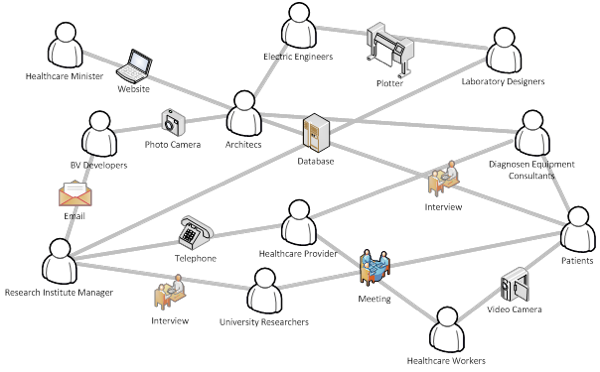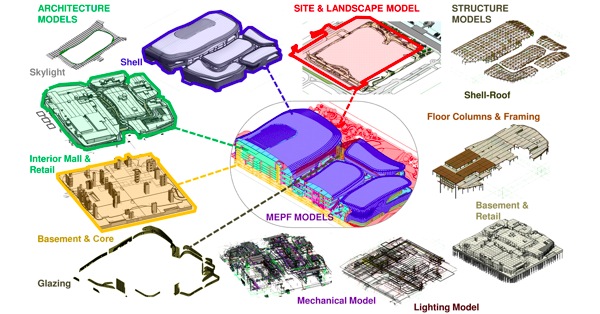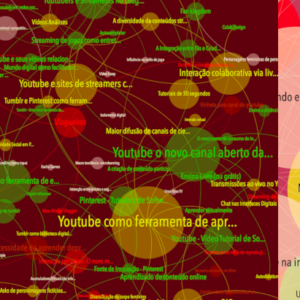The competition for exchange value has shaped the space of capitalist societies. In order to compete in the global market, the land, the cities, and the homes are becoming more alike across the world. People are trying to use space in similar ways due to the possibility of surviving from exchanges in the global market. This phenomenon is known as globalization.

Globalization puts into contact distant cultures, but also changes them. Cultural analysts alert for the demise of traditional cultures in favor of globalized lifestyles. These lifestyles are linked to market exchanges, such as buying certain products and they are quite homogeneous across cultures, much like these products. The cultural differences that prevented cross-cultural exchanges until the XIX century are now becoming a matter of taste, for the differences are greatly reduced by homogenization.

Homogenization can be explicated from a political-economic standpoint. When two different things are to be exchanged in the market, they need first to be compared against a common measure such as money. This measure does not take into account the qualitative differences in use value, but the quantitative differences in exchange value. These are related to production costs and market demands and have little regard for culture.
The homogenization of differences comes as a side effect but also as an inducer of competition for exchange value. Thanks to homogenization, one thing may be valued twice as much as another different thing. This greatly expands the possibility for exchange, but severely reduces the possibilities for use. To be valued in the global market, the spaces, the products, and the services must be designed to be used in the same way. Since the use value is lower than local items, these are discarded or replaced early.

Multi-national organizations are major players in the homogenization of differences. They are responsible for pushing the items created in one culture to another. Some of them are so large and so wide that they even claim to have a culture of their own — the corporate culture. This is made of the peculiar habits, beliefs, symbols, and procedures that are reproduced by the organization members without explicit mandates.
Due to its association with the conservation of the status quo and continuously doing things in the same way, corporate culture is often blamed for tensions in the work environment. In the hope of eliminating the tension, top managers try to explicitly interfere with the corporate culture by discouraging certain differences and standardizing procedures. In the short term, strategic homogenization is hardly achieved; the response is often an acute reaffirmation of the difference.

Differences are preserved to keep the internal competition that organizations hold among their units or professionals — be that explicit or not. Competitive differentiation is as much as important for companies as it is for professionals in the labor market. Both try to show that their work outcome is valuable enough to exchange for other things. This sometimes prevents them from recognizing the differences produced by other professionals or companies that could be complementary to their own.
The homogenization of differences does not encourage collaboration and cocreation, but fierce competition on a quantitative scale. Nevertheless, this process is counter-acted by the emergence of boundaries, which will be the topic of the next post.
In my PhD research, I have studied the attempts of companies and professionals in homogenizing differences in healthcare construction projects. The most common complaints I heard were:
- Professionals do not understand each other because they do not speak the same language
- Professionals do things in their own way and are not willing to change
- Professionals don’t take into consideration their peers’ point of view before making a decision
- Professionals look at the same drawings and get different interpretations
These problems typically entail rework. In order to avoid that, some companies tried to push the adoption of collaborative technologies such as BIM. They believed that sticking to a more contracted form of representation would concentrate better the communication efforts into one single channel. Previously, the team members had to communicate through many channels — emails, phone calls, meetings — and eventually important issues got lost in the shuffle.

BIM collaborative technology enables construction professionals to work with linked or single models. The model can be set to display only the relevant information to a certain discipline. In this way, the information from all the design disciplines can be homogenized and stored in a single model, from which multiple views can be generated.

The contraction of design representations was expected to optimize work processes in the healthcare projects studied, but they ended up alienating the team from design possibilities. The homogenization of differences between the design disciplines and their epistemologies — what is considered to be relevant knowledge — lead to misunderstandings.
Unable to fully understand what model edits meant by another professional, the designers were making wrong assumptions and producing technical errors. Further, the quantification of work outcomes into software statistics instilled more competition for exchange value, just the opposite of the desired collaboration for use value. The designers did not engage long enough with users and late use requirements appeared, what demanded painful rework.
In evaluation, the professionals recognized that collaboration and coordination were worse than without the collaborative technology, but they believed this was a necessary investment to be done. They expected that sooner or later, the new technology would become commonplace and they would lose competitiveness in the market. The main force behind this change was indeed the competition for exchange value.
In order to communicate and experiment the difficulty of handling the contradiction between exchange value and use value in design projects, I designed a board game called The Expansive Hospital. The game put the players in a situation in which this contradiction may or may not arise, depending on the level of the players’ engagement.
Each player has a role, with a different power and income scheme. Players gain money according to their actions and the richest wins at the end. This is the first winning condition.

If players stick to these roles, they might not win the second winning condition: reaching the hospital excellence award. This means generating great use value for workers and patients through the hospital design. If the hospital is good for patients, there is also more money in the game and players can become even richer.
However, the roles are set as to make this difficult due to the conflicts of interest. Initially, players are only concerned about their own self-interests and may or may not make the turn to common interests. If they make the turn, the collaboration for use rises and counters the competition for exchange value. From this point on, the contradiction is manifested in the game. Otherwise, if players compete only and do not collaborate at all, there is no contradiction and the game is soon over.
A double stimulation experiment was held with facility design students to study how players deal with this contradiction. There were two groups: one that just played as prescribed by the rules and went bankrupt in a few rounds, and another group that discovered a flaw in the rules and succeeded in building a profitable hospital. The flaw made collaboration more appealing than competition for everybody and they ended up building a hospital with great use value.
The experiment results lead to conclude that players — and perhaps design professionals — need to resist the homogenization of differences by standardized processes, contracts, and collaborative technologies and produce their differences. They need to go beyond the quantitative differences prescribed by the rules — in the case of the game, income scheme, and decision power — and develop qualitative differences such as negotiation profiles, a sense of belonging to a group, and common goals. These differences become complementary instead of mutually exclusive, moving the multidisciplinary team a step forward towards collaboration for use value.
In the next post, I’ll share how the production of further differences created boundaries between the players. Surprisingly, this was not in disadvantage for the project.
References
Amstel, F. M.C. van; Zerjav, V; Hartmann, T; Dewulf, G.P.M.R; Voort, M.C. van der. 2016. Expensive or expansive? Learning the value of boundary crossing in design projects. Engineering Project Organization Journal, 6 (1), Pages 15-29. DOI: https://doi.org/10.1080/21573727.2015.1117974

